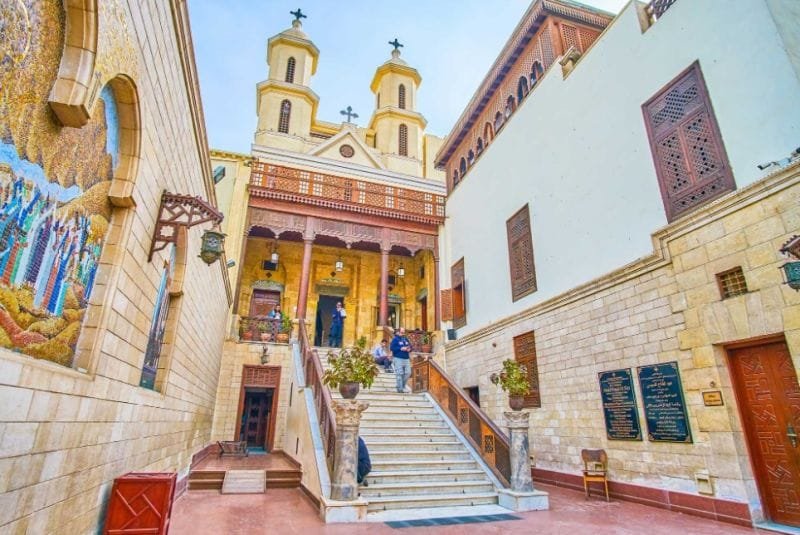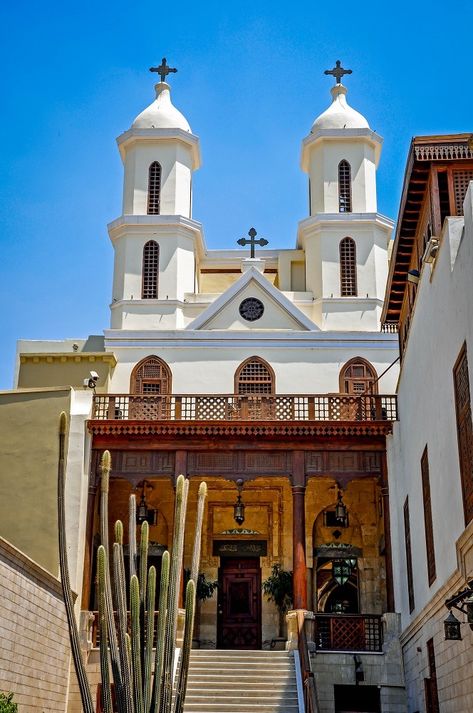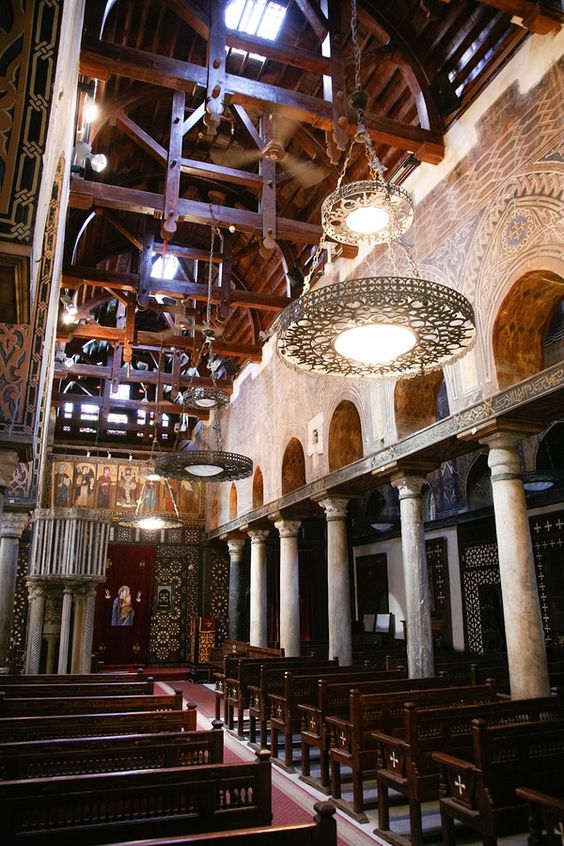The Hanging Church, officially known as Saint Virgin Mary’s Coptic Orthodox Hanging Church, is one of the most recognizable and historically significant religious sites in Egypt. Located in the historic Coptic Cairo area, this church has stood as a testament to Egypt’s deep Christian roots for over a millennium. Its unique name comes from its elevated position above the gatehouse of the ancient Babylon Fortress, a Roman military stronghold, making it appear as though the church is “hanging” in mid-air. This striking location gives it both architectural and spiritual significance, making it one of the most visited Christian sites in Egypt.
The church was originally constructed during the 3rd century CE, but the current structure dates from the 7th century. Its history is tightly intertwined with the rise of Christianity in Egypt and the evolution of the Coptic Orthodox Church. Over the centuries, the Hanging Church has undergone several renovations and expansions, with the most notable ones occurring during the 9th and 12th centuries. It became the seat of the Coptic Orthodox Pope of Alexandria in the 10th century, solidifying its role as the spiritual heart of the Coptic Christian community.
The Hanging Church stands as a symbol of both resilience and religious continuity in Egypt. Despite facing periods of religious tension and political changes, the church has managed to maintain its religious and cultural importance. It remains an active place of worship today, hosting regular services, prayers, and special events. This sacred site continues to be an enduring symbol of Egypt’s Christian heritage, attracting both pilgrims and tourists who come to admire its unique history, architecture, and spiritual significance.








